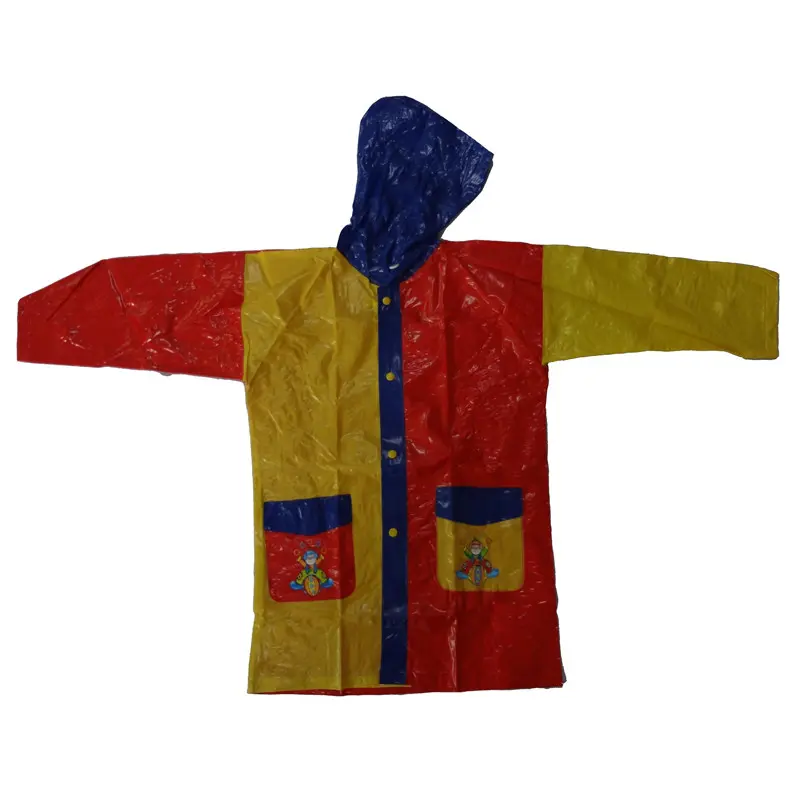ធ្នូ . 05, 2024 06:30 Back to list
PVC Raincoat Production and Supply Solutions for All Weather Needs
The Rise of PVC Raincoat Manufacturers A Look into the Industry
As one of the most versatile and practical materials used in rainwear, PVC (Polyvinyl Chloride) has gained notable recognition in the fashion and outdoor apparel industries, particularly in the production of raincoats. Manufacturers specializing in PVC raincoats are experiencing significant growth, driven by consumer demand for durable, waterproof, and stylish outerwear. In this article, we explore the evolution, production processes, and market outlook for PVC raincoat manufacturers, as well as the implications for sustainability and consumer preferences.
Evolution of PVC Raincoats
The use of PVC in rainwear dates back several decades, but its popularity surged in the 1980s and 1990s when manufacturers began to recognize its advantages over other materials like rubber and traditional fabrics. PVC is not only waterproof but also lightweight, flexible, and cost-effective. These features make PVC raincoats particularly appealing to diverse consumer demographics, from urban dwellers needing reliable rain protection to outdoor enthusiasts requiring functional gear.
In recent years, PVC raincoat manufacturers have diversified their product lines to cater to changing fashion trends and environmental concerns. While traditional designs have remained popular, many brands are introducing modern cuts, vibrant colors, and eco-friendly alternatives. This evolution reflects a broader shift in consumer expectations, where style and sustainability go hand in hand.
Manufacturing Processes
The manufacturing process for PVC raincoats typically involves several key stages. First, high-quality PVC resin is sourced, which is then compounded with additives to enhance its properties, such as UV resistance, flexibility, and color. The compounded material is then processed through techniques like extrusion or calendering to create sheets of fabric.
Once the PVC fabric is ready, manufacturers cut the material into patterns based on specific designs. Automated cutting machines streamline this process, ensuring precision and minimizing waste. The pieces are then sewn together using specialized techniques to create seams that are both strong and watertight. Additionally, many manufacturers incorporate features such as adjustable hoods, ventilation openings, and pockets to enhance functionality.
Quality control is paramount in the production of PVC raincoats. Manufacturers conduct rigorous testing to ensure that the final products meet industry standards for waterproofing, durability, and comfort. This commitment to quality not only fosters consumer trust but also helps brands establish a solid reputation in an increasingly competitive market.
pvc raincoat manufacturer

Market Outlook and Trends
The market for PVC raincoats is poised for growth, driven by several factors. Climate change has resulted in erratic weather patterns, leading to increased rainfall in many regions. As a result, consumers are seeking reliable rain gear that can withstand unexpected downpours. Additionally, the rising popularity of outdoor activities, such as hiking and cycling, has contributed to the demand for functional rainwear that combines practicality with style.
Moreover, e-commerce has transformed how consumers shop for PVC raincoats. Online platforms allow manufacturers to reach a broader audience, providing them with valuable insights into consumer preferences. Social media marketing and influencer partnerships have also become crucial strategies for brands looking to capture the attention of younger demographics, who prioritize both fashion and functionality.
Sustainability Challenges and Innovations
While PVC raincoat manufacturing offers numerous advantages, it is not without its challenges. The production of PVC raises environmental concerns, particularly regarding its lifecycle and the impact of plastic pollution. Manufacturers are increasingly aware of these issues and are actively seeking sustainable solutions.
Several companies are exploring recycled PVC and alternative materials as a means of reducing their environmental footprint. Innovations in bioplastics and coating technologies aim to create more sustainable rainwear options without compromising performance. Additionally, brands are adopting environmentally conscious practices in their supply chains, ensuring that ethical standards are upheld throughout the production process.
Conclusion
The landscape of PVC raincoat manufacturing is evolving, driven by consumer demand, technological advancements, and a growing emphasis on sustainability. As the industry navigates challenges related to environmental impact, manufacturers have the opportunity to innovate and lead the way towards more sustainable practices. With a focus on quality, style, and functionality, PVC raincoat manufacturers are well-positioned to meet the needs of modern consumers while contributing to a more environmentally responsible future.
-
PVC/PEVA Sleeves: Durable Protection for Workshop & Labour Safety
NewsAug.19,2025
-
Waterproof Kid Apron with Sleeves: PEVA/PVC for Painting Fun!
NewsAug.18,2025
-
36x90" Double Zipper Post Mortem Bag - Secure & Reliable
NewsAug.17,2025
-
Waterproof PVC/Vinyl Work Apron - Heavy-Duty Protection
NewsAug.16,2025
-
Heavy Duty Post Mortem Bag - 36x90, Double Zipper
NewsAug.15,2025
-
Durable PVC Vinyl Work Apron - Waterproof for Workshop
NewsAug.14,2025





